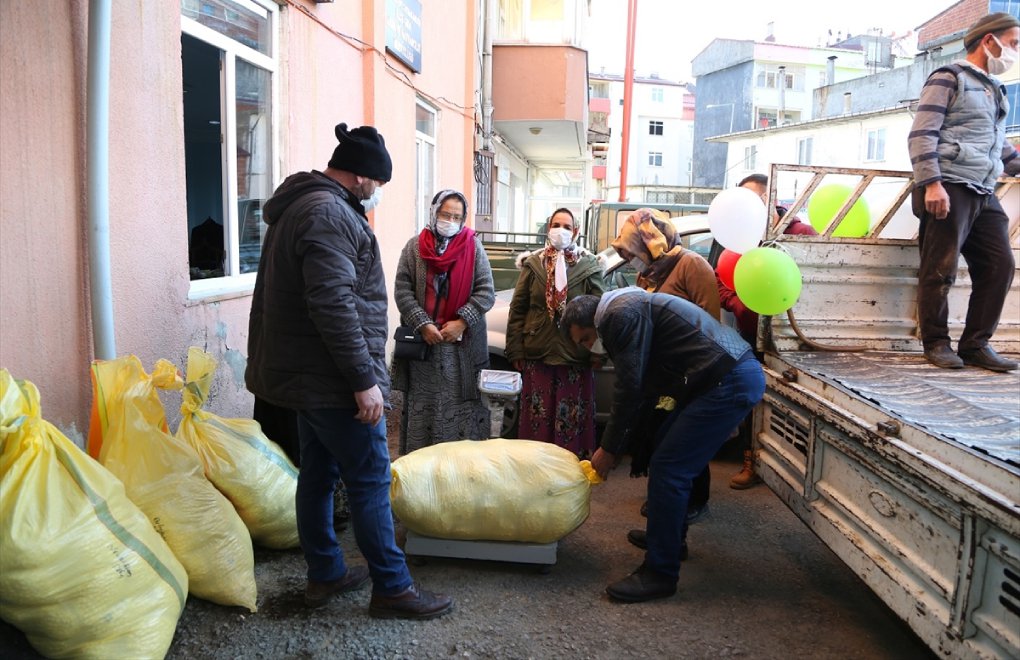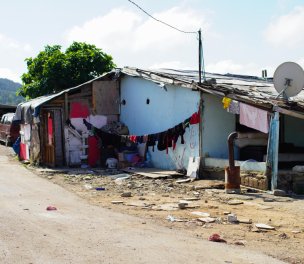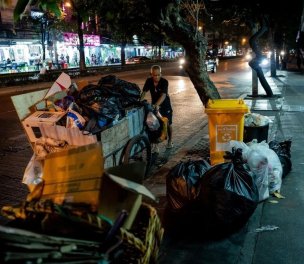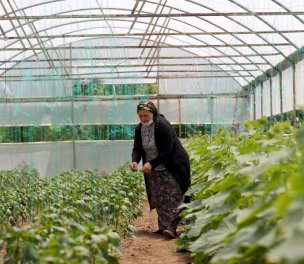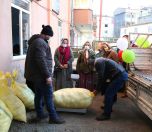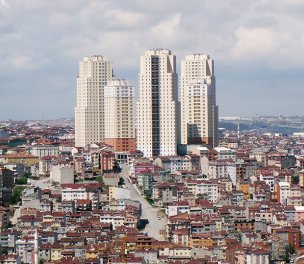* Photo: Anadolu Agency (AA)
Click to read the article in Turkish
The Turkish Statistical Institute (TurkStat), the state agency responsible for producing official statistics on Turkey, released the results of the "Income and Living Conditions Survey 2020" yesterday (June 15).
According to the information shared in the survey in reference to the year 2019, the income distribution kept on changing for the worse.
This deterioration reached such an extent that the share of the 20 percent of the population having the highest income increased by 1.2 percentage points to 47.5 percent in a year while the share of the 20 percent of the population with the lowest income in the total income decreased by 0.3 percentage points when compared to 2019 and stood at 5.9 percent in 2020.
Gini coefficient increased
According to 2020 results, Gini coefficient was estimated at 0.410 with an increase of 0.015 points compared with the previous year.
What is the Gini coefficient? The Gini coefficient, one of the measures of income inequality, varies between 0, which reflects complete equality and 1, which indicates complete inequality. In other words, the closer this number is to zero, the more equal the income distribution is.
Other highlights from the survey are as follows:
Mean annual household disposable income
The mean annual household disposable income was 69 thousand 349 Turkish Lira (TRY) in 2020 with an increase of 15.8 percent compared to last year in Turkey. In Turkey, the mean annual equivalised household disposable income increased by 17.2 percent compared to the previous year from 28 thousand 522 TRY to 33 thousand 428 TRY.
Higher education graduates had highest income
Mean annual income at main job was calculated as 63 thousand 085 TRY for higher education graduates, 41 thousand 855 TRY for high or equivalent school graduates, 32 thousand 838 TRY for those with less than high school education 22 thousand 936 TRY for those who do not graduate from a school and 16 thousand 785 TRY for illiterate individuals.
In 2020, compared to 2019, the highest increase in income at the main job was observed in the literate with no degree individuals with 25.5 percent and the lowest increase was in illiterate individuals with 18.8 percent.
Construction sector held the highest increase
When the mean annual income at the main job is analyzed in the branch of economic activity; it was observed that the highest mean annual income was in the service sector with 46 thousand 034 TRY and the lowest mean annual income was in agriculture with 25 thousand 263 TRY.
he highest increase in mean annual income was observed in the construction sector with 31 percent, followed by the industrial sector with 26.1 percent. On the other hand, an increase of 23.9 percent was observed in the service sector and 15.8 percent in the agricultural sector.
Employers had the highest income
Mean annual income at the main job was 125 thousand 698 TRY for employers, 42 thousand 006 TRY for regular employees, 33 thousand 207 TRY for self employed workers, 17 thousand 577 TRY for casual employees. Compared to 2019, the highest increase was in employers with 31.6 percent and the lowest increase was in casual employed workers with 19 percent.
Relative poverty rate: 15 percent
The people having incomes below a specified line compared to the general population are defined to be the poor in a relative sense.
The at-risk-of-poverty-rate according to the poverty threshold set at 50 percent of median equivalised household disposable income was 15 percent with an increase of 0.6 points compared to 2019.
As for the at-risk-of-poverty-rate according to the poverty threshold set at 60 percent of median equivalised household disposable income, it was 21.9 percent with an increase of 0.6 points in comparison with 2019.
In terms of the at-risk-of-poverty-rate according to the poverty threshold set at 50 percent of median equivalised household disposable income, 26.7 percent of illiterates and 25.7 percent of literates with no degree were poor. The figures for less than high school and high school graduates were 14 percent and 8.3 percent respectively. Higher education graduates were the group with the lowest poverty rate with 3.2 percent.
Severe material deprivation rate: 27.4 percent
Material deprivation reflects to perception of households about inability to pay unexpected financial expenses, one week's annual holiday away from home, mortgage or rent payments, a meal with meat, chicken, fish every second day and heating home adequately warm and the ownership of a washing machine, a color TV, a telephone and a car.
The severe material deprivation rate defined as the rate of people faced with the enforced inability to afford at least four of the above-mentioned items increased from 26.3 percent in 2019 to 27.4 percent in 2020.
In 2020, the persistent at-risk-of-poverty-rate was 13.7 percent with an increase of 1 point in comparison with the previous year.
People living in their own dwellings: 57.8 percent
In 2020, the proportion of the population living in their own dwellings decreased by 1 point compared to 2019, it was calculated as 57.8 percent while the share of those living in rented house was 26.2 percent, the share of those living in lodging was 1.2 percent and the share of those who did not pay rent despite not living in their own dwellings was 14.7 percent.
People having installments or loans: 58.3 percent
58.3 percent of the population had installments or loans (other than mortgage - for the main dwelling - and housing cost), 12.8 points less than last year. While these payments did not burden 7 percent of the population, it was a heavy burden to 18.8 percent.
59.3 percent of the households reported that they cannot afford paying for one week annual holiday away from home, 37.3 percent of them cannot afford a meal with meat, chicken or fish every second day, 32.2 percent of them cannot afford unexpected financial expenses, 20.3 percent of them cannot afford keeping home adequately warm and 58 percent of them cannot afford replacing worn furniture. (HA/SD)




